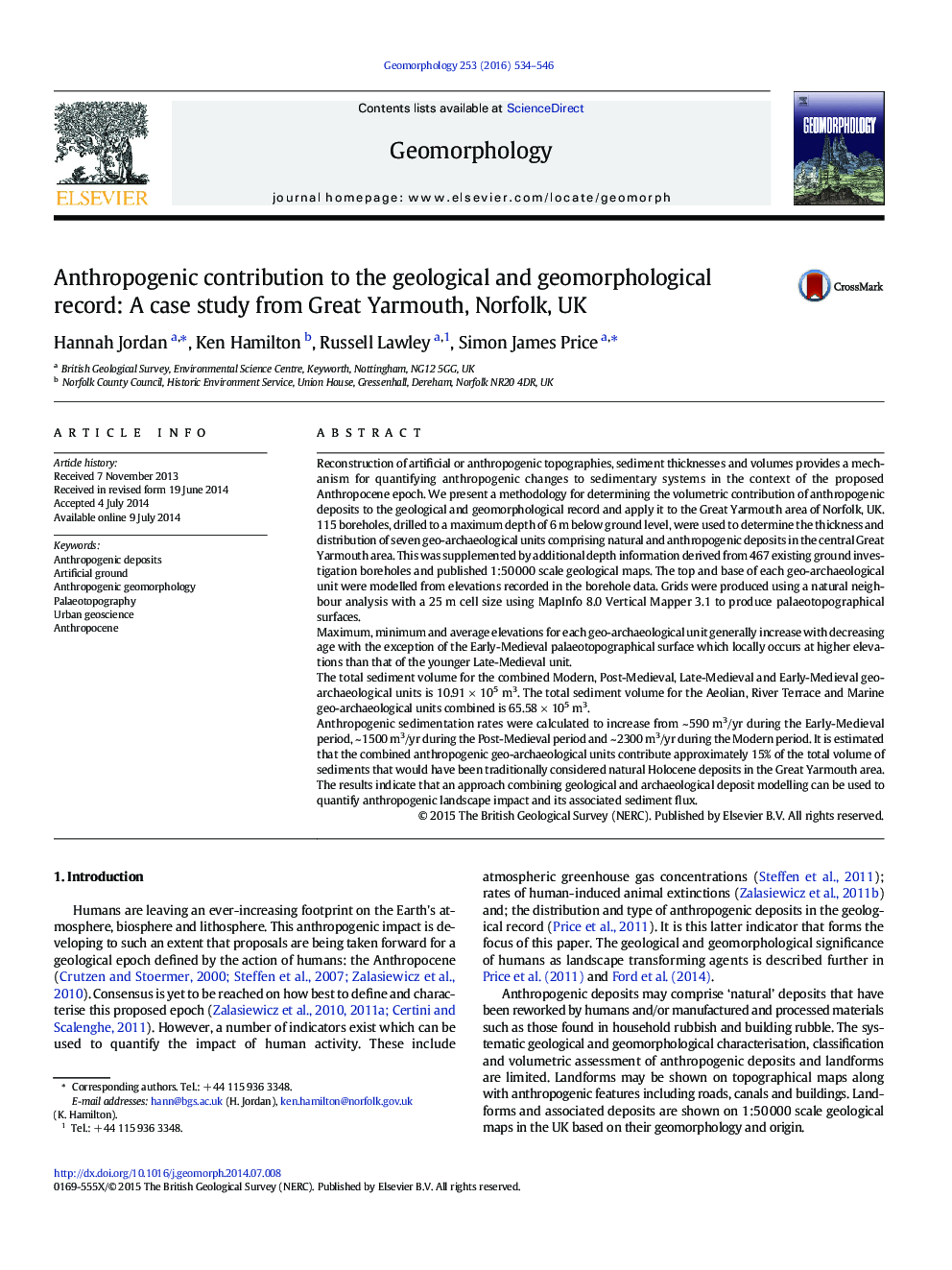| کد مقاله | کد نشریه | سال انتشار | مقاله انگلیسی | نسخه تمام متن |
|---|---|---|---|---|
| 6431758 | 1635396 | 2016 | 13 صفحه PDF | دانلود رایگان |
- Modelling artificial deposits aids quantification of human-landscape interaction.
- Natural topography in Great Yarmouth may be masked by 5.08Â m of artificial deposits.
- ~Â 15% of Holocene deposit volume in Great Yarmouth may be anthropogenic in origin.
- Anthropogenic deposits could provide evidence for the proposed Anthropocene epoch.
Reconstruction of artificial or anthropogenic topographies, sediment thicknesses and volumes provides a mechanism for quantifying anthropogenic changes to sedimentary systems in the context of the proposed Anthropocene epoch. We present a methodology for determining the volumetric contribution of anthropogenic deposits to the geological and geomorphological record and apply it to the Great Yarmouth area of Norfolk, UK. 115 boreholes, drilled to a maximum depth of 6Â m below ground level, were used to determine the thickness and distribution of seven geo-archaeological units comprising natural and anthropogenic deposits in the central Great Yarmouth area. This was supplemented by additional depth information derived from 467 existing ground investigation boreholes and published 1:50Â 000 scale geological maps. The top and base of each geo-archaeological unit were modelled from elevations recorded in the borehole data. Grids were produced using a natural neighbour analysis with a 25Â m cell size using MapInfo 8.0 Vertical Mapper 3.1 to produce palaeotopographical surfaces.Maximum, minimum and average elevations for each geo-archaeological unit generally increase with decreasing age with the exception of the Early-Medieval palaeotopographical surface which locally occurs at higher elevations than that of the younger Late-Medieval unit.The total sediment volume for the combined Modern, Post-Medieval, Late-Medieval and Early-Medieval geo-archaeological units is 10.91Â ÃÂ 105Â m3. The total sediment volume for the Aeolian, River Terrace and Marine geo-archaeological units combined is 65.58Â ÃÂ 105Â m3.Anthropogenic sedimentation rates were calculated to increase from ~Â 590Â m3/yr during the Early-Medieval period, ~Â 1500Â m3/yr during the Post-Medieval period and ~Â 2300Â m3/yr during the Modern period. It is estimated that the combined anthropogenic geo-archaeological units contribute approximately 15% of the total volume of sediments that would have been traditionally considered natural Holocene deposits in the Great Yarmouth area. The results indicate that an approach combining geological and archaeological deposit modelling can be used to quantify anthropogenic landscape impact and its associated sediment flux.
Journal: Geomorphology - Volume 253, 15 January 2016, Pages 534-546
